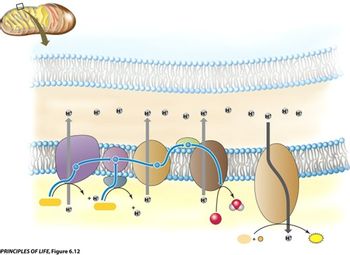Read all the parts of this question before answering. Thermogenesis is a metabolic process used to generate heat in many homeothermic/endothermic/warm-blooded animals and a few species of plants. Thermogenesis involves an uncoupling protein that allows protons to flow from the intermembrane space back into the mitochondrial matrix. a. What two processes – which are normally energetically coupled – become uncoupled by the action of uncoupling proteins? b. What kind of a protein allows ions such as H+ to diffuse through a membrane?
Read all the parts of this question before answering. Thermogenesis is a
a. What two processes – which are normally energetically coupled – become uncoupled by the action of uncoupling proteins?
b. What kind of a protein allows ions such as H+ to diffuse through a membrane?
The generation of ATP depends on the generation of electrochemical gradient in electron transport chain. This process occurs in the inner mitochondrial matrix of eukaryotic cells.
Step by step
Solved in 2 steps

c. On the diagram below, i) draw where the uncoupling protein must be located and ii) indicate the direction of proton flow through the uncoupling protein.









